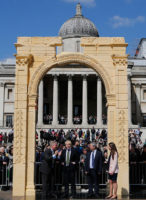Mumbai, India
Record Houses 2008
Glenburn House ![]() H16
H16 ![]() Maltman Bungalows
Maltman Bungalows ![]() Palmyra House
Palmyra House ![]() The Rolling Huts
The Rolling Huts ![]() Wall House
Wall House ![]() Dairy House
Dairy House ![]() Nora House
Nora House ![]() VH r-10 gHouse
VH r-10 gHouse
Located in the Alibaug area of India where this hardy species grows in abundance, the house evokes an amalgam of vernacular architecture and contemporary design. Jain relied on his intuition to guide his process. “There is a constant struggle to understand the sense of that intuition and finding a method within myself to be as honest to it as possible. In this case, it was about a light, air-filled volume,” he says.
In the end, the architect built not just one volume, but two louvered wooden boxes in a functioning coconut plantation in Nandgaon, a quiet, sun-drenched land of palm trees where time seems to stand still and the natives go about their daily chores as they did ages ago. However, given that India’s restless financial capital, Mumbai, sits just an hour across nearby Mandwa Bay, the area has long been favored by wealthy Mumbaikars seeking weekend homes and a place to relax. Not surprisingly, the region is dotted with exciting new architecture commissioned by some of India’s richest clients. Palmyra House serves as a vacation home for a Mumbai-based entrepreneur and his family.
Accessed by foot, roughly 165 feet from the road, the house’s two rectangles encompass 3,000 square feet and are anchored to a stone plinth. A 25-foot-wide open court separates the buildings, with a pool that alludes to the plantation’s 80-year-old system of stone aqueducts. The house offers dramatic views of the Indian Ocean and was situated to disturb as little as possible the densely planted palms on the 1-acre plot.
PeopleArchitect Studio Mumbai Architects Principal Architect: Bijoy Jain Project Team: Jeevaram Suthar, Mangesh Mhatre, Roy Katz, Samuel Barclay, Faheem Khan, Mohammed Nizam, Punaram Suthar, Jean Marc Moreno Interior designer: Studio Mumbai Architects Consultant(s) Landscape: Studio Mumbai Architects Lighting: Studio Mumbai Architects General contractor: Studio Mumbai Architects Photographer(s) Samuel Barclay CAD system, project management, or other software used: AutoCAD 2006
|
ProductsRoofing Metal: Jean Marc Moreno |
















Post a comment to this article
Report Abusive Comment